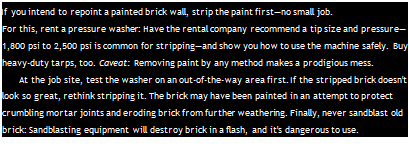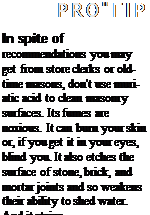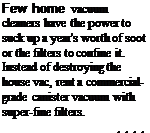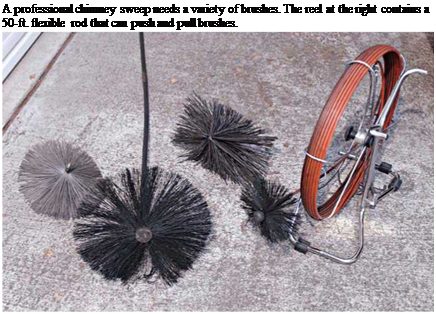CLEANING AND SEALING EXTERIORS
Use the gentlest, least damaging cleaning agents, chemicals, steam cleaner, or water pressure that works. Determine this by testing on an inconspicuous area. If the gentlest method doesn’t work, move to the next stronger. If mortar joints are eroded, a pressure washer may make them leak. After cleaning, allow the brickwork to dry for two days or three days; then caulk gaps around doors and windows and replace worn flashing. Safety note: Whatever cleaning method you choose, wear a face shield, rubber gloves, protective clothing, and a respirator mask before you begin.
Cleaning brick surfaces. Get bids on hiring an authorized cleaning service. Because cleaning solvents can be hazardous and must be disposed of according to EPA and local environmental standards, hiring professionals will spare you those headaches. Moreover, the service will be responsible for achieving the desired results, however long it takes. If you’ve got a tight budget or an adventurous spirit, consider the DIY options described next; they’re listed more or less in order of gentleness. Wear safety glasses and rubber gloves for all procedures, and read operating manuals carefully before using pressure washers, steam cleaners, and the like.
Use a garden hose to soak the surface, and then scrub with a nylon scrub brush. The warmer the water and the longer the soak, the more dirt you’ll remove.
If the hose wash isn’t sufficient, try a pressure washer on a low setting. Increase the pressure slightly—say, to 300 psi to 400 psi—and you’ll remove yet more. Note: If you see sand in the runoff water, lower the machine’s pressure settings immediately. Otherwise, you may be stripping the mortar joints. Likewise, monitor the inside of the building, especially around windows, for leaks; it’s easier to lower the pressure than to replace drywall.
Steam cleaning is especially effective if surfaces are mossy, or have ivy “trails” or built-up grime. Although somewhat slower than pressure washing, steam doesn’t generate the volume of runoff and won’t penetrate as deeply into brick surfaces or cracks.
If you’re in an urban area where soot and auto exhaust have soiled the building, try a nonionic detergent with a medium pressure (1,000 psi) next. Nonionic detergents such as GAF’s Igepal®, Union Carbide’s Tergitol®, and Rohm & Haas’ Triton® won’t leave visible residues, as household detergents and TSP (trisodium phosphate) will. Again, scrub with a synthetic-bristle brush, and rinse well.
If these methods don’t produce the results you want, proprietary chemical cleaners are the next step. They usually involve a three-step process— wetting surfaces, applying the cleaner and scrubbing it in, and then rinsing—repeated as many times as needed. If you apply the cleaner, follow manufacturer’s instructions to the letter. Instructions will be quite specific about safety garb, dilution rates, dwell times (how long the chemical remains on), washer settings, temperature ranges (most don’t work well below 50°F.), and so on. Before committing to a cleaning system, visit the manufacturer’s Web site and call its tech-support number.
Sealing exteriors. Are water-repellent or waterproof coatings necessary on exterior masonry walls above grade? Mostly, no. There may be a few 200-year-old buildings in every city whose porous brick would benefit from being coated, but most masonry exteriors won’t admit water if rain is directed away from the structure by gutters, downspouts, and other standard drainage details and if the masonry is properly flashed, caulked, and detailed.
![]()


![]() First of all, so-called exterior sealants, loosely divided into water-repellent and waterproofing
First of all, so-called exterior sealants, loosely divided into water-repellent and waterproofing
![]()

 coatings, don’t fully seal masonry surfaces, nor would you want them to. A perfect seal could trap water inside the walls. Moreover, masonry walls with water trapped inside and walls that are wicking moisture from the ground will, in time, exude soluble salts in the masonry as powdery white substances called efflorescence.
coatings, don’t fully seal masonry surfaces, nor would you want them to. A perfect seal could trap water inside the walls. Moreover, masonry walls with water trapped inside and walls that are wicking moisture from the ground will, in time, exude soluble salts in the masonry as powdery white substances called efflorescence.
Water-repellent coatings, which are usually clear, penetrate masonry pores and so keep rain from penetrating to a large degree, while allowing water vapor from living areas to escape through the wall. Most water-repellent compounds are water-based, formulated from silanes, siloxanes, and silane/siloxane blends. Both premixed and concentrated coatings are available—typically applied in several coats. Some water-repellent coatings double as graffiti barriers, though they tend to be shiny.
Waterproof coatings come closer to being true sealers because they’re usually pigmented or opaque and form a thin elastomeric (flexible) film. Chemically, they run the gamut from water based to bituminous. Bituminous varieties are widely applied below grade on building foundations and, to a lesser extent, to interior basement walls where mild leaks have occurred.






Leave a reply